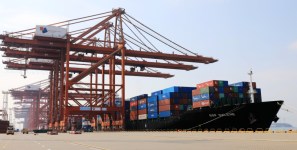Global Air Cargo Trends Re-Shaping Pharmaceutical Transport
As we welcome the new decade and the exciting advances it is expected to unleash, many of the forces that shaped the past decade for transporting pharmaceuticals will continue. Price pressures, alternatives to air freight and increasing automation are just a few. However, there are emerging trends that make 2020 unique.
As we look forward, these are the air cargo trends expected to shape the transport of pharmaceuticals in 2020 and beyond.
The Greta Thunberg Effect — Flying Shame
We can’t ignore the effect that climate change activist Greta Thunberg is having on air travel that runs on fossil fuels. Thunberg’s reliance on trains to travel from her home country of Sweden to other countries in Europe connected by rail has triggered a material effect on passenger numbers in Sweden. According to Bloomberg, Swedish air travel diminished in 2019 — while train travel jumped to a record level.1
What could this mean for shipping pharmaceuticals by air? As “extinction rebellion” shows no sign of slowing down, air freight carriers — like their passenger transporting counterparts — will feel more pressure to seek alternative fuel sources and replace older planes with more fuel-efficient models. To further address the Thunberg effect, carriers and their logistics partners will also need to elevate their brand image by demonstrating they are adopting eco-friendly practices such as reusable or waste-stream friendly shipping containers made from recyclable materials. Especially for shipping pharmaceuticals, these shipping containers must still maintain strict temperature control to ensure valuable payloads arrive intact.
Global Trade Pressures Drive Down Air Freight Demand
After years of wrangling over the details of Brexit, the UK is departing from the European Union (EU) — and entering a transition period through the end of 2020. The effects of Brexit and the fact that Germany only narrowly avoided an official recession at the end of the last decade have been driving down European air freight demand. Furthermore, US tariffs aimed at four counties in retaliation over subsidies to Airbus has hit Germany especially hard.
Meanwhile, the US-China trade war began to thaw with the signing of an initial trade deal. But trading data showed the climate would have to improve significantly to combat the year-on-year 8.1% decline in freight tonne kilometers experienced in 2019.2 Price is the crudest and quickest tool at air freight’s disposal to address diminishing demand. However, long-term price cutting is not sustainable and in the face of continued change, air freight companies will have no choice but to cut flights from their schedules and mothball aircraft — and cease to exercise purchasing options that did not factor in declining demand.
Diminished Air Freight Demand Means Reduced Capacity
Air freight remains the predominant mode of transportation for moving life-saving pharmaceuticals around the globe, especially for the most valuable and sensitive therapies that require strict temperature control. Sea transport, accounting for approximately 20% of pharmaceutical shipments3, made gains in recent years as an alternative transport mode for non-temperature sensitive products and the return of containers after payloads have reached their destination. However, for the foreseeable future, pharmaceutical companies will remain reliant on air freight for transportation of products that could succumb to temperature excursions.
Declining air freight and passenger demand combine to produce a double whammy for the pharmaceutical industry. As air freight capacity becomes an even more precious and dwindling resource, there are things that can be done to mitigate reduced capacity. For example, temperature-controlled packaging systems will need to step more into the foreground to reduce volumetric weight, providing higher performing insulation and phase change materials that can considerably improve volumetric efficiency.
However, packaging systems currently available to reduce volumetric weight are typically more expensive unless they are re-used, and re-use can’t always be achieved efficiently for both financial and environmental reasons. The pharmaceutical packaging industry will need to look more closely at the installed capabilities of aircraft to manage temperature, which could make lower-grade packaging materials more acceptable. The capabilities of the aircraft will also need to be matched to ground conditions and reliable sourcing can be difficult in less developed regions of the world.
Pharmaceutical Packaging: No Longer Rickshaw Vs. Tank
When it comes to pharmaceutical packaging, one size does not fit all — nor should it. The days of choosing between a rickshaw or a tank are behind us. Pharmaceutical packaging manufacturers have broadened their product portfolios to enable the most efficient solutions to be selected, qualified and deployed on a lane-by-lane basis across truly global supply chains. Making the right selections and performing the necessary qualifications can be daunting compared to the old simplicity of “I’ll have a tank everywhere.” But this is the challenge we must face to deliver value and make responsible use of dwindling resources such as global air freight capacity.
The good news is that cold chain consultants have the tools and resources to streamline this new approach. Packaging products have been engineered and tested to incorporate operational consistency and simplicity that might otherwise make it too complex to deploy. Networks and services have also been developed and deployed to enable efficient and reliable outsourcing of operations.
_________________________________________________________
Dominic Hyde is the Vice President of Crēdo on Demand at Pelican BioThermal.
References:
1. As ‘Flying Shame’ Grips Sweden, SAS Ups Stakes in Climate Battle, Bloomberg, April 14, 2019.
2. Air Cargo Demand Continues Negative 2019 Trend, International Air Transport Association (IATA), May 29, 2019.
3. Will Ocean Freight Be the Dominant Mode of Transport for Pharma Payloads?, Pharma Logistics IQ, July 12, 2018






Leave a Reply